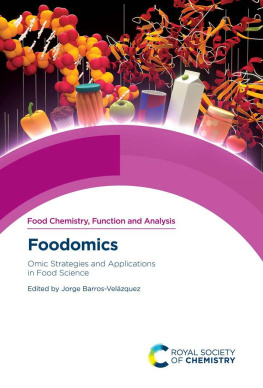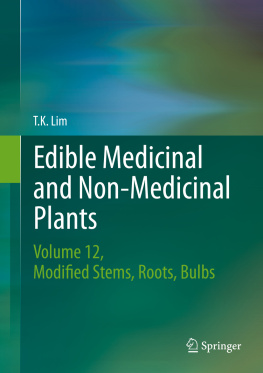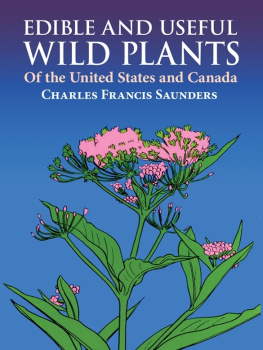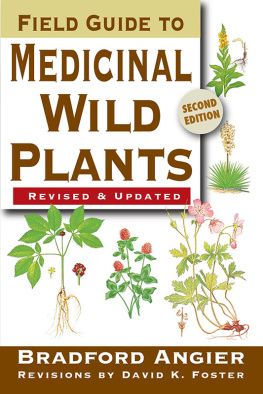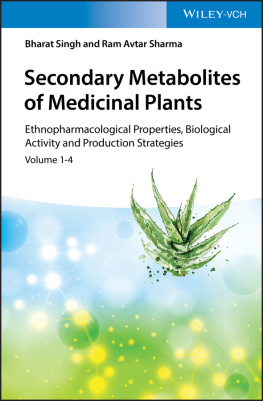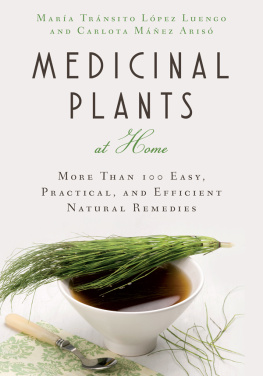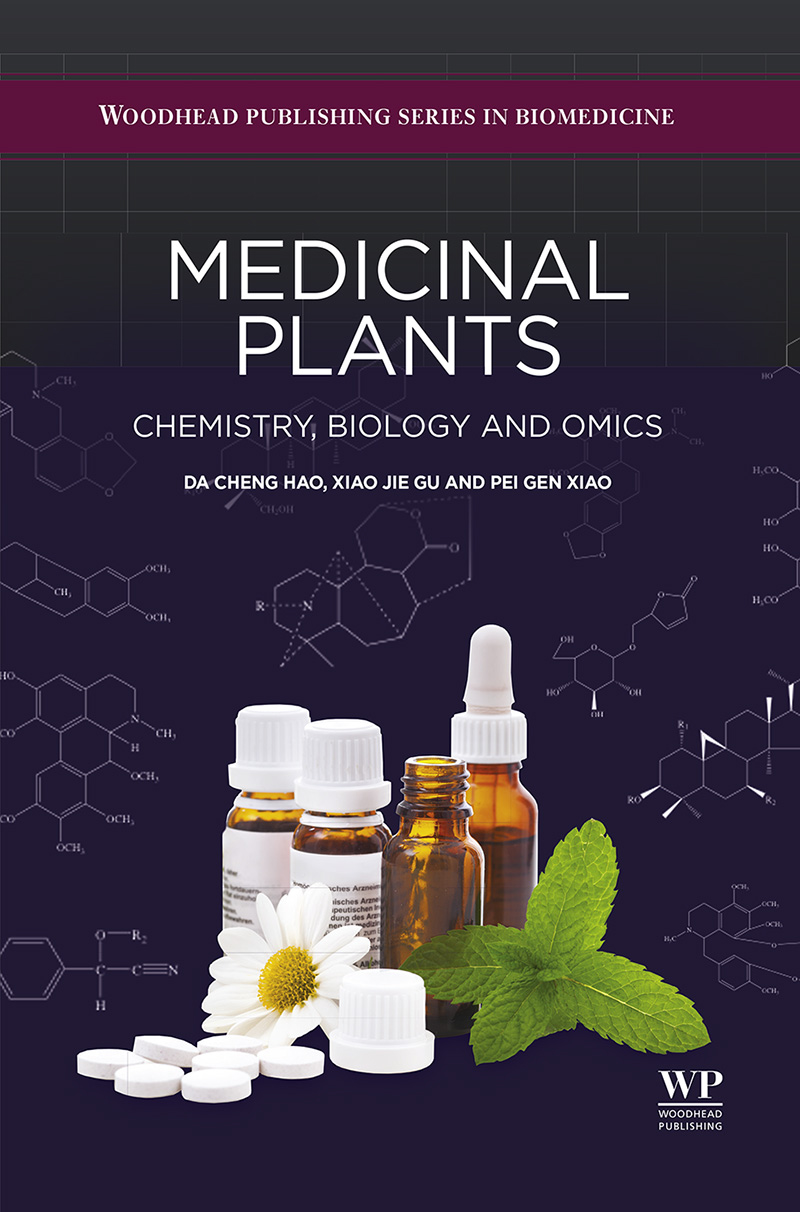Medicinal Plants
Chemistry, Biology and Omics
First Edition
Da Cheng Hao
Xiao-Jie Gu
Pei Gen Xiao

Copyright
Woodhead Publishing Limited is an imprint of Elsevier
80 High Street, Sawston, Cambridge, CB22 3HJ, UK
225 Wyman Street, Waltham, MA 02451, USA
Langford Lane, Kidlington, OX5 1GB, UK
Copyright 2015 Elsevier Ltd. All rights reserved.
No part of this publication may be reproduced, stored in a retrieval system or transmitted in any form or by any means electronic, mechanical, photocopying, recording or otherwise without the prior written permission of the publisher.
Permissions may be sought directly from Elseviers Science & Technology Rights Department in Oxford, UK: phone (+44) (0) 1865 843830; fax (+44) (0) 1865 853333; email: , and selecting Obtaining permission to use Elsevier material.
Notice
No responsibility is assumed by the publisher for any injury and/or damage to persons or property as a matter of products liability, negligence or otherwise, or from any use or operation of any methods, products, instructions or ideas contained in the material herein. Because of rapid advances in the medical sciences, in particular, independent verification of diagnoses and drug dosages should be made.
ISBN: 978-0-08-100085-4 (print)
ISBN: 978-0-08-100103-5 (online)
British Library Cataloguing in Publication Data
A catalogue record for this book is available from the British Library
Library of Congress Cataloging-in-Publication Data
A catalog record for this book is available from the Library of Congress
Library of Congress Number: 2015942335
For Information on all Woodhead Publishing publications visit our website at http://store.elsevier.com/

Preface
Medicinal plants provide myriad pharmaceutically active components, which has been commonly used in traditional Chinese medicine (TCM) and worldwide ethnomedicine for thousands of years. Increasing interest in plant-based medicinal resources has led to additional discoveries of many novel compounds, such as steroidal alkaloids, saponins, terpenoids, glycosides, in various angiosperm and gymnosperm species, and to investigations on their chemotaxonomy, molecular phylogeny, and pharmacology. In continuation with our studies on pharmacophylogeny, in this book we review the phytochemistry, chemotaxonomy, molecular biology, and phylogeny of selected medicinal plant tribes and genera and their relevance to drug efficacy. Literature search is used to characterize the global scientific effort in the flexible technologies being applied. The interrelationship within traditional Chinese medicinal plant groups and between Chinese species and species outside of China is clarified by the molecular phylogenetic inferences based on nuclear and chloroplast DNA sequences. The incongruence between chemotaxonomy and molecular phylogeny is revealed and discussed. It is indispensable to study more species, according to the principles of pharmacophylogeny, for both the sustainable utilization of medicinal resources and finding novel compounds with potential clinical utility. Systems biology and omics technologies (genomics, transcriptomics, proteomics, metabolomics, etc.) will play an increasingly important role in future pharmaceutical research involving bioactive compounds of land plants.
Biodiversity represents an endless source for the discovery of pharmacological active compounds in the development of new medicinal drugs. Bioactive compounds occur in a broad diversity of organisms ranging from bacteria to flowering plants. Discoveries are made through systematic taxonomical investigations and the analysis of herbal medicines used for thousands of years in TCM, Ayurvedic medicine, and worldwide ethnomedicine. The medicinal drugs represent a broad spectrum of chemical structures such as steroidal alkaloids, saponins, terpenoids, polyphenol, and glycosides. Promising compounds are further investigated and developed for improved analog drugs through approaches such as chemotaxonomy, molecular phylogeny, and poly-pharmacology. Evolutionary biology and chemical ecology, especially when approached by high-throughput genomic technology, are closely related to the above fields and would significantly facilitate both, a more systematic approach toward the conservation of medicinal plant diversity as well as drug discovery and development. Some researchers would argue that the discovery of many compounds is passthe chemical side has been looked at for many years. Evolutionary approaches could thus provide new twist and add new dimension in medicinal plant studies. For example, approved and clinical-trial natural product drugs are obtained from clustered and disjunct taxonomic clades and similarly are herbal indigenous pharmacopeias biased toward the selection of certain phylogenetic clusters.
Evolutionary analyses have been performed at different levels, including genes involved in the biosynthesis of secondary metabolites, its pathways and networks, population dynamics and the molecular interaction of species with the ecosystem or parts thereof (chemical ecology). Also, have studies focusing on the evolution of biosynthesis pathways provided novel insights and directed approaches in synthetic biology and metabolic engineering. Evolutionary approaches offer a rich science-based method to prospect plant diversity having revealed predictive power for bioprospecting traditional medicines. The trend of integrating evolution into studies of medicinal plants is perceivable and therefore it is time to summarize the current progress in the relevant fields in order to make full use of evolutionary biology and revolutionize the roadmap of medicinal plant research.
This book wish to reflect the current progress in phylogeny, chemotaxonomy, molecular biology, and phytochemistry of selected medicinal plant tribes and genera in the light of evolutionary biology and genomics. In the context of evolution, each chapter of this book is a kind of fusion of commentary, perspective, and review, which aims to characterize the global scientific effort as well as the flexible technologies and methods applied, and also illustrate how evolutionary biology could further our understanding of a number of aspects of medicinal plant research.
Five features of this book
reviews and summarizes best practice and essential developments in medicinal plant chemistry and biology;
discusses the principles and applications of various chemical, biology, and omics techniques used to discover medicinal compounds, bioactivities, and underlying evolutionary relationship;
explores the analysis and classification of novel plant-based medicinal compounds;
includes case studies on pharmacophylogeny;
compares and integrates traditional knowledge and current perception of worldwide medicinal plants.
The book is designed for use by senior undergraduate and graduate students, researchers, and professionals in medicinal plant, phytochemistry, pharmacognosy, molecular biology, biotechnology, agriculture, and pharmacy working in the academic and industrial sectors. Students and researchers in pharmacology, medicinal chemistry, plant systematics, food and nutrition, clinical medicine, evolution and ecology, as well as professionals in pharmaceutical industries might also be interested in plants included in this book.


